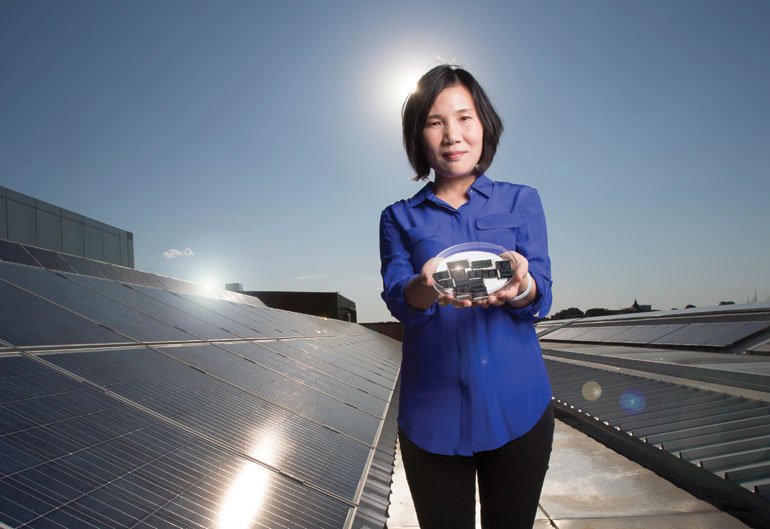New flexible solar cells made by a team at the University of NSW from non-toxic materials are sparking excited talk about ‘zero-energy’ buildings, which generate as much power as they consume.
The promise of ‘zero-energy’ buildings has been held back by two hurdles: the cost of thin-film solar cells used in facades, roofs and windows; and the fact they’re made from scarce and highly-toxic materials.
The toxicity of substances like cadmium and selenium used in two main thin-film contenders – CdTe (cadmium-telluride) and CIGS (copper-indium-gallium-selenide) – has made the construction industry wary of using them.
A team led by Dr Xiaojing Hao of the Australian Centre for Advanced Photovoltaics is claiming the world’s highest efficiency rating for full-sized, thin-film solar cells using an alternative thin-film technology made from abundant materials like copper, zinc, tin and sulphur – known as CZTS.
Recent test results of CZTS in the US recorded a 7.6 per cent efficiency in a 1 cm2 area cell.
Dr Hao said there is still some work to be done to catch up to its two thin-film rivals CdTe and CIGS, both in efficiency and cell size, but they are well on the way.
“This is the first step on CZTS’s road to beyond 20 per cent efficiency, and marks a milestone in its journey from the lab to commercial product,” she said.
“I’m quietly confident we can overcome the technical challenges to further boosting the efficiency of CZTS solar cells. There are a lot of tricks we’ve learned over the past 30 years in boosting CdTe and CIGS and even silicon cells, but which haven’t been applied to CZTS.”
Hao said thin-film technologies are attractive because they are physically flexible, which increases the number of potential applications, such as curved surfaces, roofing membranes, or transparent and translucent structures like windows and skylights.



